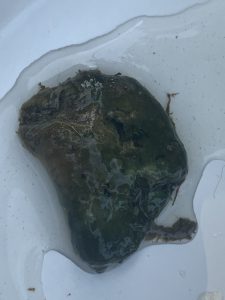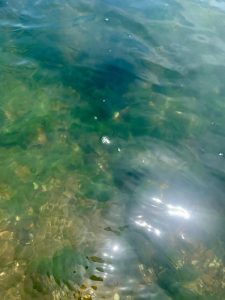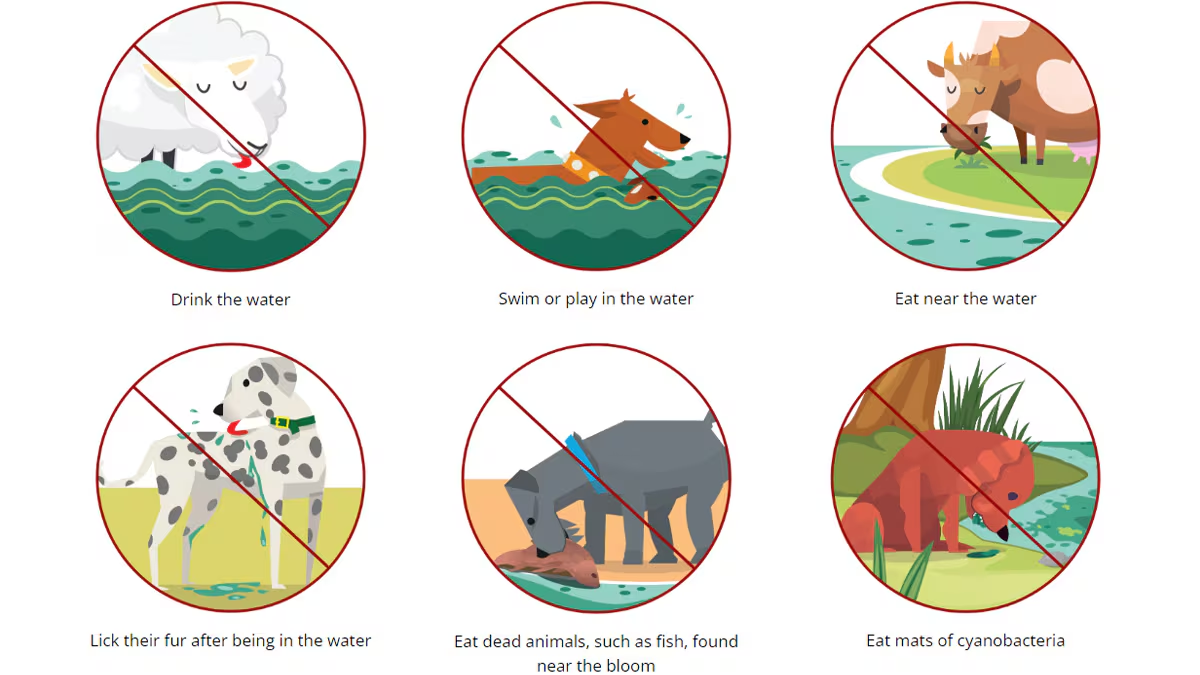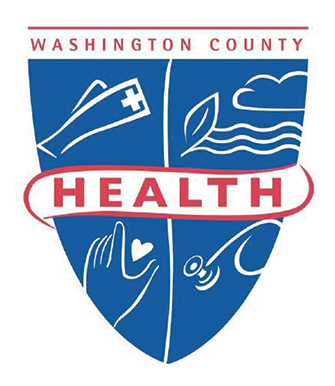Health Alert 7/12/24: Algae mats detected in the Potomac River from below Williamsport to Riley Lock
Preventing Pet and Livestock Illnesses Caused by Harmful Algal Blooms
Harmful algal blooms of cyanobacteria (also called blue-green algae) are microscopic organisms that can be found naturally in all types of water.
Sometimes cyanobacteria rapidly grow out of control, or bloom. Some of these blooms produce toxins (poisons) that make people and animals sick. Cyanobacterial blooms are most commonly found in fresh water, such as lakes, rivers, and streams.
Exposure
Pets and livestock can get very sick and die within hours to days after swallowing cyanobacterial toxins. The toxins can be in the cyanobacteria or in the water.


If you think there is a cyanobacterial bloom in the water, do not let your pets or livestock do any of the following:

Prevention steps and strategies
Take action if your pets or livestock go near or into water with a cyanobacterial bloom.
If your pets or livestock have been in the water, immediately wash them off with clean water to keep them from licking cyanobacteria off their fur.
- Call a veterinarian if your animal shows any of these signs:
- Loss of energy
- Loss of appetite
- Vomiting
- Stumbling and falling
- Foaming at the mouth
- Diarrhea
- Convulsions
- Excessive drooling
- Tremors and seizures
- Any unexplained sickness that occurs within a day or so after being in contact with water
Call the ASPCA Animal Poison Control Center at 1-888-426-4435 or the Pet Poison Helpline at 1-855-764-7661 if you have questions about your pet or livestock. (Note: There is a fee for these calls.)
Information is from the CDC

